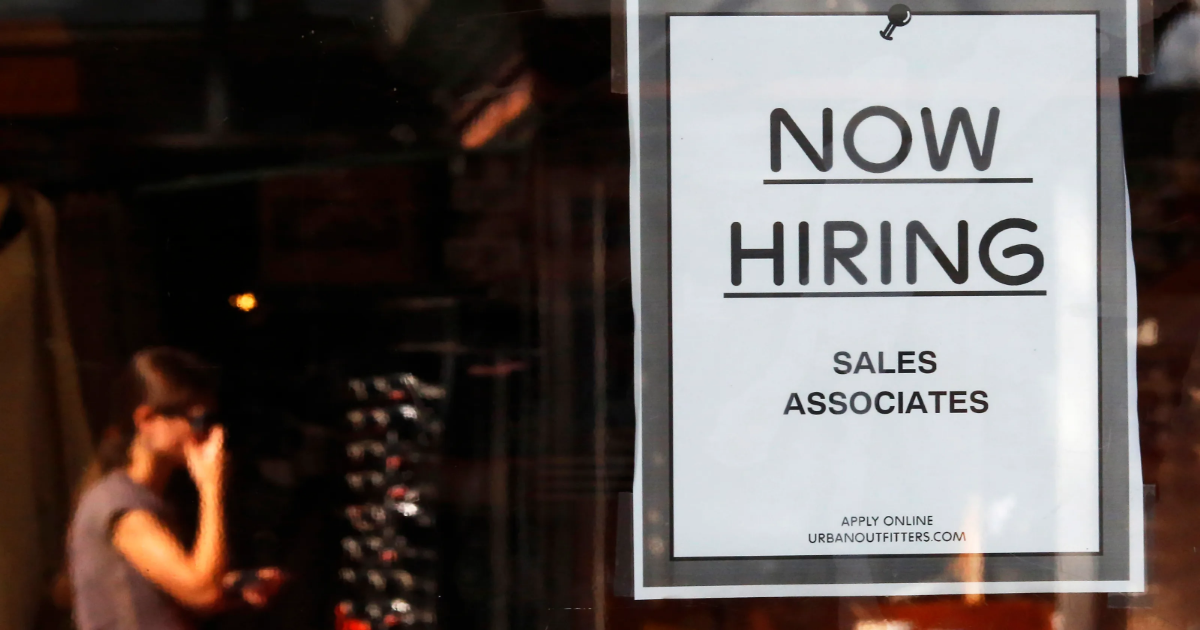Hiring unexpectedly picked up sharply in March as employers added 228,000 jobs despite federal government layoffs and growing uncertainty about President Donald Trump’s sweeping import tariffs.
But gains for the previous two months were revised down substantially, offsetting some of March’s strong showing.
The unemployment rate, which is calculated from a separate survey, rose from 4.1% to 4.2%, the Bureau of Labor Statistics said Friday.
“You cannot find any evidence of a nascent recession in these figures,” Carl Weinberg, chief economist of High Frequency Economics, wrote in a note to clients.
Economists surveyed by Bloomberg had expected about 140,000 job gains.
Need a break? Play the USA TODAY Daily Crossword Puzzle.
Some forecasters said a rebound was likely following the adverse effects of frigid weather and worker strikes on payrolls in January and February. The labor market early in the year was even weaker than believed, with the bureau revising down payroll additions for those two months by a total 48,000. Just 111,000 jobs were added in January and 117,000 in February.
What industries have the most new jobs?
Health care, a reliable payroll engine the past couple of years, led March’s job gains with 54,000. Leisure and hospitality added 43,000; retail, 24,000, largely because of the return of striking supermarket workers; and transportation and warehousing, 23,000.
But professional and business services, a sprawling sector that includes lawyers, architects and other white-collar workers, added just 3,000 jobs.
How did DOGE affect March’s jobs report?
Federal layoffs by Elon Musk’s Department of Government Efficiency, or DOGE, were expected to shave federal employment by 25,000, Morgan Stanley estimated. Instead U.S. government payrolls fell by just 4,000. That likely reflects the legal challenges being waged by many of the workers who were let go, keeping them employed for the time being, said economist Thomas Ryan of Capital Economics.
Another 75,000 to 80,000 federal workers who took DOGE buyouts are still being paid but are expected to reduce government employment by fall.
What is the pay trend in 2025?
Average hourly earnings rose 9 cents to $36, pushing down the yearly increase from 4% to 3.8%.
Wage growth generally has slowed as pandemic-related labor shortages have eased, helping temper inflation.
Annual pay gains theoretically should fall to 3.5% to align with the Federal Reserve’s 2% inflation goal, But recent strong growth in productivity, or output per worker, could let companies dole out 4% raises without having to increase prices, economists say.
How is the job market doing right now?
The report was a final portrait of a labor market that was feeling the early impact of Trump’s tariffs on metals and Chinese imports but not the sweeping duties he announced this week. Average monthly job growth slowed from 209,000 in the fourth quarter of 2024 to less than 120,000 the first two months of this year.
In coming months, payroll gains could downshift more dramatically as those far-reaching import taxes push up inflation and dampen consumer spending, analysts say. The S&P 500 index on Thursday tumbled nearly 5%, its worst day since the depths of the COVID-19 pandemic in 2020, and economists say the odds of a recession are historically high.
Stellantis said Thursday it’s pausing production at auto assembly factories in Mexico and Canada because of the new auto tariffs, leading it to temporarily lay off 900 workers at parts plants in Michigan and Indiana.
How does weather affect employment?
At the same time, a bounce-back in leisure and hospitality was anticipated after cold weather suppressed customer traffic and payrolls at restaurants and hotels the first two months of the year. Bank of America said the harsh weather likely curtailed employment by about 30,000. Goldman Sachs put the figure as high as 100,000, adding that warmer temperatures likely provided “a modest boost” to March job numbers.
The resolution of worker strikes by hospital and supermarket employees was also set to lift total payrolls by about 15,000, according to Morgan Stanley and the Bureau of Labor Statistics.
What are the effects of tariffs?
More challenging to assess was the business uncertainty generated by Trump’s tariffs early in the year on steel, aluminum and Chinese imports and the prospect of the much larger but then-uncertain levies Trump unveiled Wednesday. The President this week announced a minimum 10% charge on all imports and double-digit levies on top of that on shipments from dozens of countries, along with a 25% fee on auto imports.
China and Canada were among countries vowing retaliation that could hammer U.S. exports.
Even before the announcement, U.S. companies had notably scaled back their hiring and investment plans due to Trump’s comparatively measured import fees, surveys showed.
“If they follow through, slower hiring depresses March employment growth more than we anticipate,” Morgan Stanley wrote in a note to clients before the jobs report was released.
Raj Namboothiry, senior vice president of Manpower North America, a leading staffing firm, bemoaned a “collective paralysis” in the job market.
“Employers aren’t canceling hiring initiatives outright, but they’re dragging their feet at every stage of the process,” Namboothiry said, adding that job openings are down 10% compared to a year ago. “Decision timelines that used to take days now take weeks or months. The uncertainty around tariffs and economic policy has everyone second-guessing themselves and is absolutely affecting hiring confidence.”
In recent months, Cat & Cloud Coffee, based in Santa Cruz, California, has rejected landlords’ offers to open new cafes in the city because of the jitters generated by Trump’s tariffs, said company owner Charles Jack.
The company roasts 300,000 pounds of coffee a year that it sells at its four local cafes, as well as to cafes, offices and grocery stores around the country. Cat & Cloud has no choice but to import the coffee from countries such as Columbia, Guatemala and Honduras.
“Our product can’t be made in the U.S.,” he said,
A new café would have required adding 5 employees, Jack said. Instead, the company has suspended hiring for this year.
Now, Trump’s announcement of reciprocal tariffs will mean a 10% charge on the coffee Jack orders from overseas, adding $120,000 to the $1.2 million a year he already pays.
Jack said he’ll have to raise coffee prices by 25 cents to 50 cents a cup and is unsure how that will affect sales. He said he’ll have to at least consider trimming staff, and if the tariffs dampen the economy so much that consumers broadly cut their coffee purchases, “then we’re going to have to reduce employment” further.
So far, while businesses have pulled back their hiring, they’ve also refrained from layoffs after enduring pandemic-related labor shortages the past couple of years.
“Now that the writing is on the wall, we predict they will start laying off workers right away,” Weinberg of High Frequency Economics said.
This story has been updated with new information.



